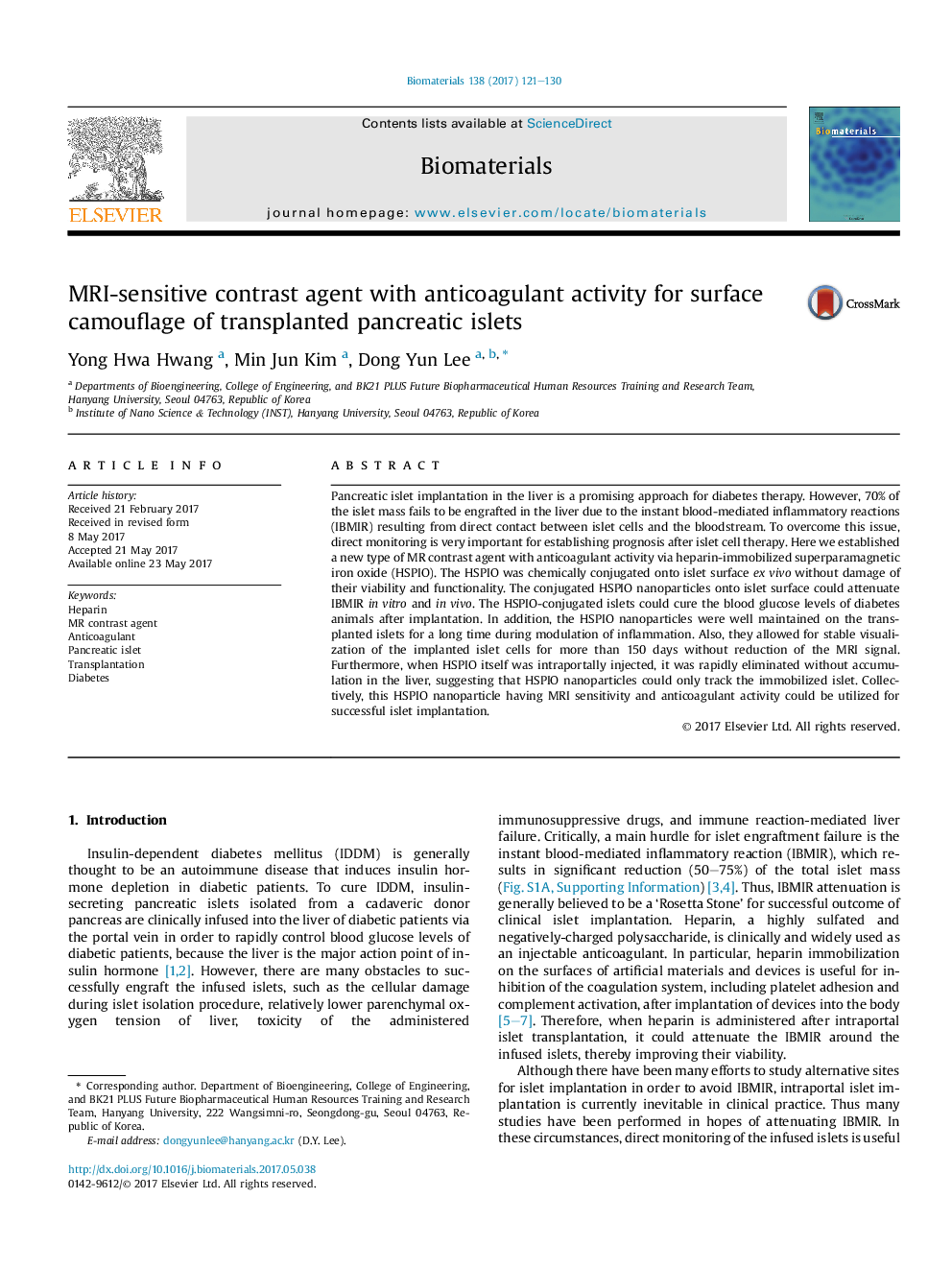| Article ID | Journal | Published Year | Pages | File Type |
|---|---|---|---|---|
| 6450624 | Biomaterials | 2017 | 10 Pages |
Pancreatic islet implantation in the liver is a promising approach for diabetes therapy. However, 70% of the islet mass fails to be engrafted in the liver due to the instant blood-mediated inflammatory reactions (IBMIR) resulting from direct contact between islet cells and the bloodstream. To overcome this issue, direct monitoring is very important for establishing prognosis after islet cell therapy. Here we established a new type of MR contrast agent with anticoagulant activity via heparin-immobilized superparamagnetic iron oxide (HSPIO). The HSPIO was chemically conjugated onto islet surface ex vivo without damage of their viability and functionality. The conjugated HSPIO nanoparticles onto islet surface could attenuate IBMIR in vitro and in vivo. The HSPIO-conjugated islets could cure the blood glucose levels of diabetes animals after implantation. In addition, the HSPIO nanoparticles were well maintained on the transplanted islets for a long time during modulation of inflammation. Also, they allowed for stable visualization of the implanted islet cells for more than 150 days without reduction of the MRI signal. Furthermore, when HSPIO itself was intraportally injected, it was rapidly eliminated without accumulation in the liver, suggesting that HSPIO nanoparticles could only track the immobilized islet. Collectively, this HSPIO nanoparticle having MRI sensitivity and anticoagulant activity could be utilized for successful islet implantation.
